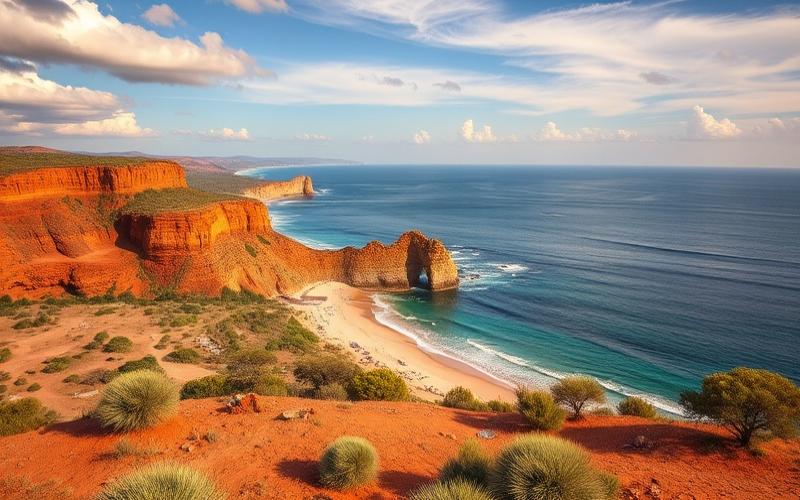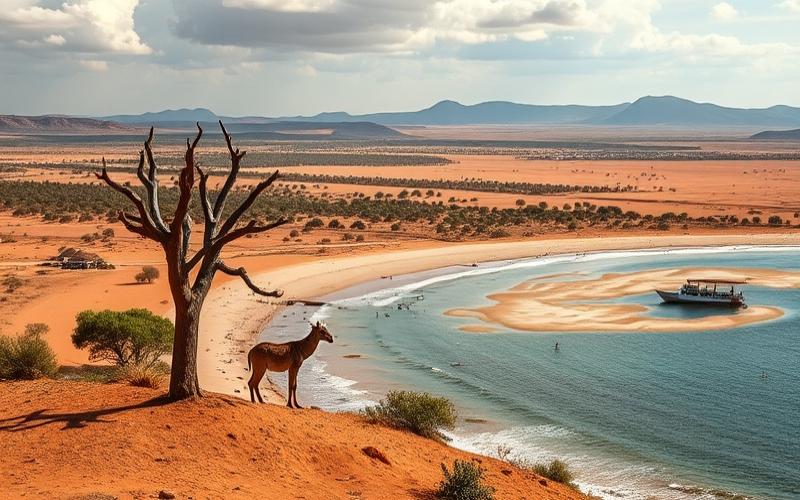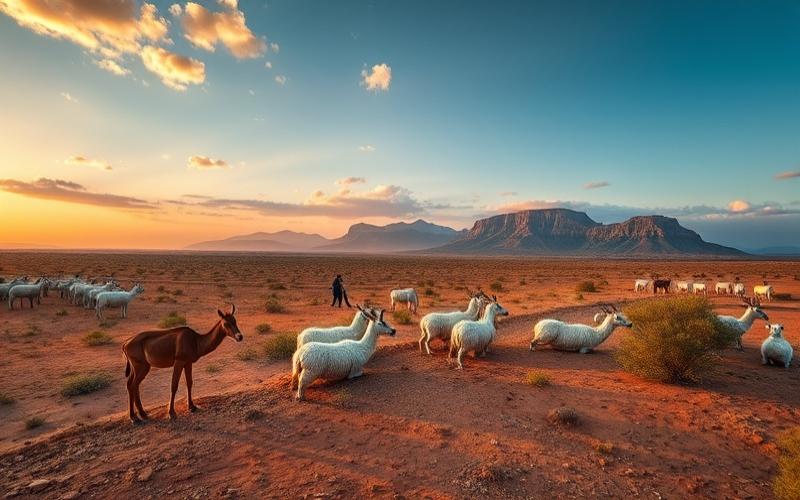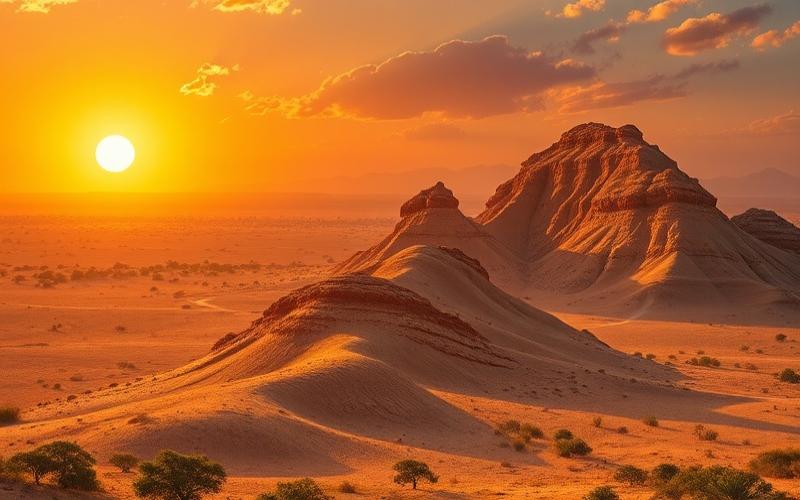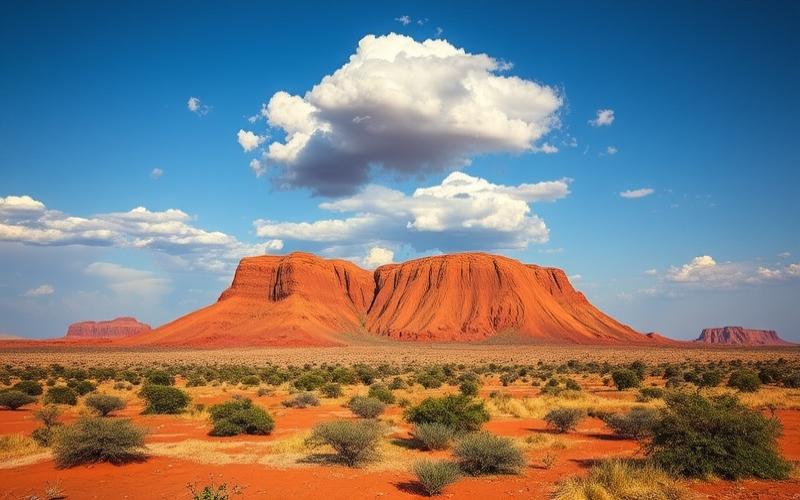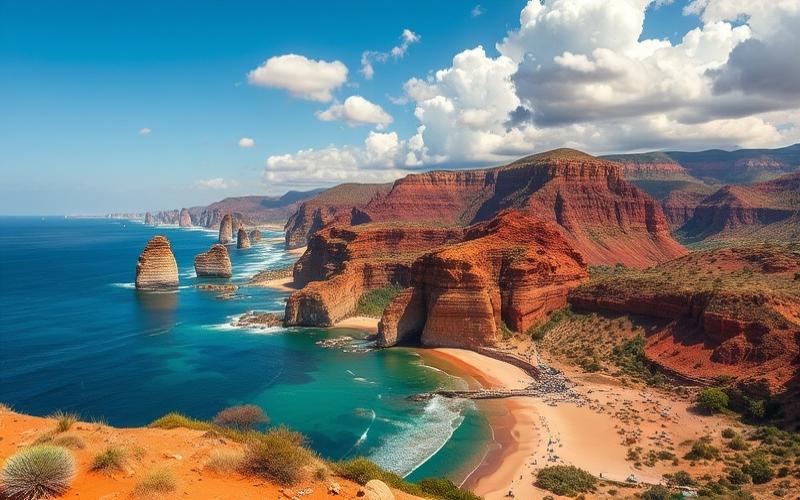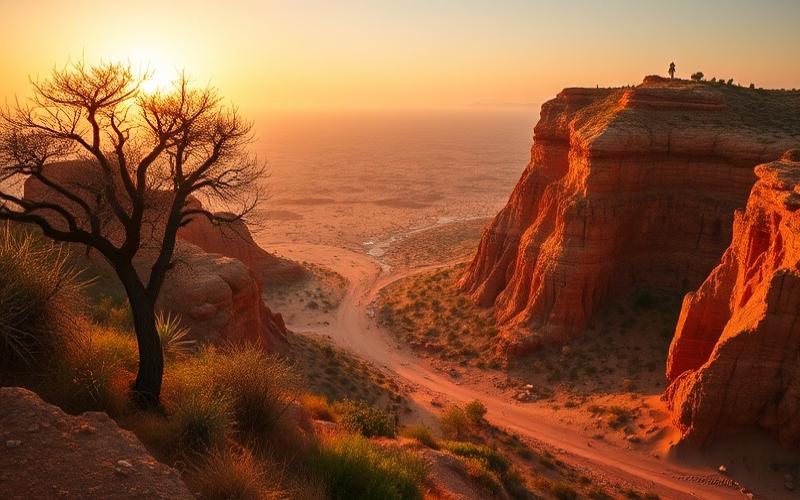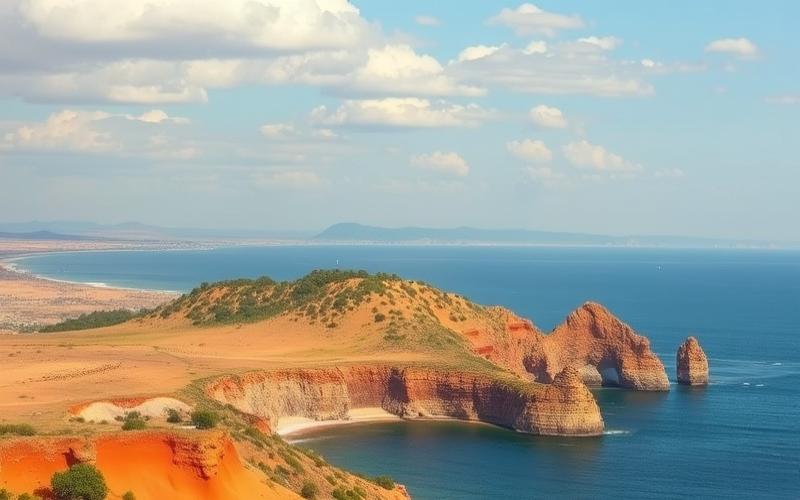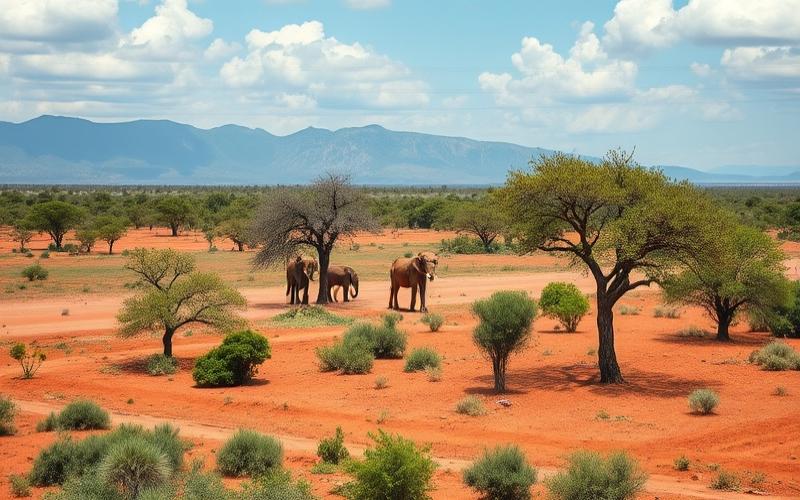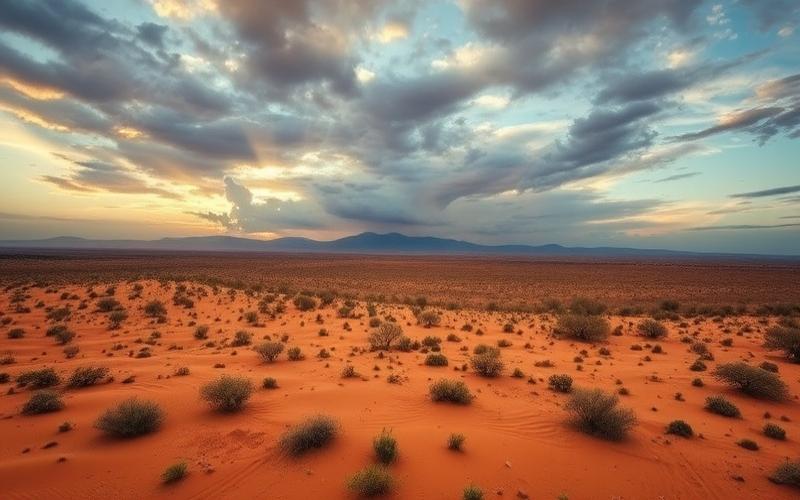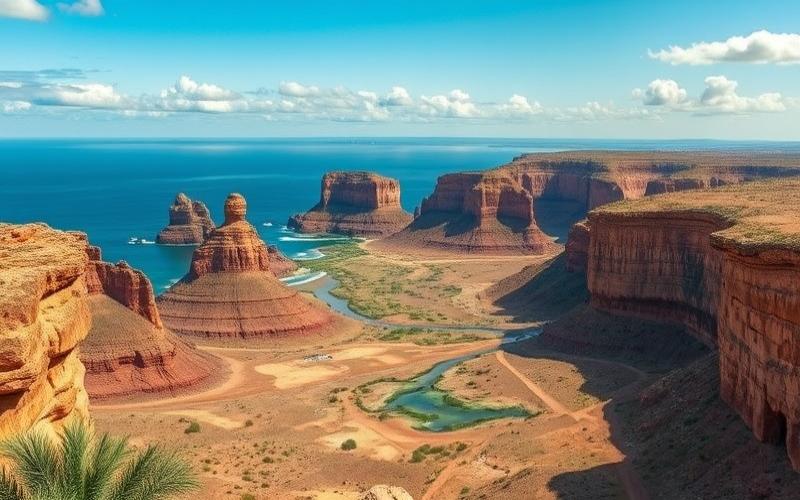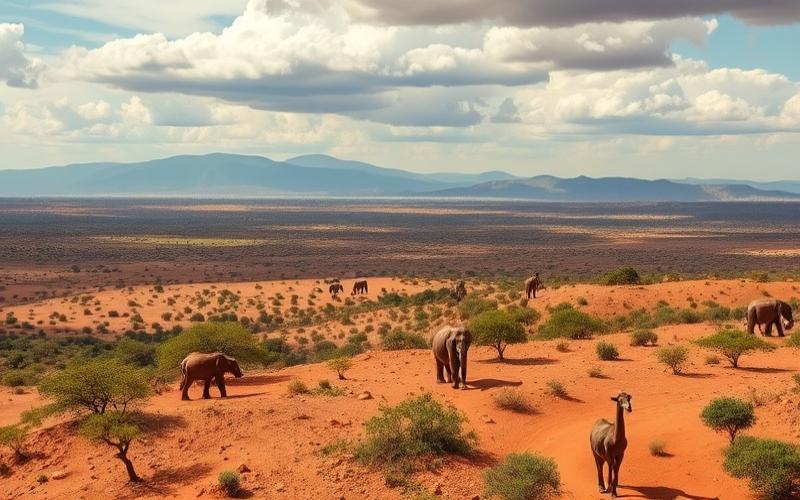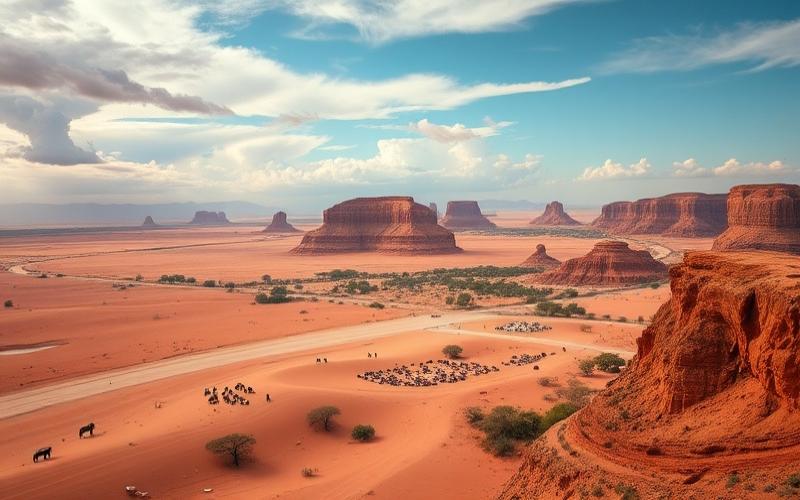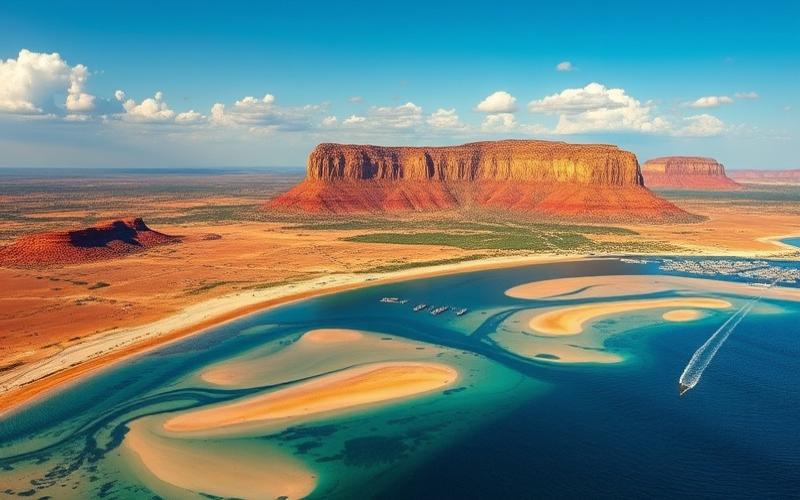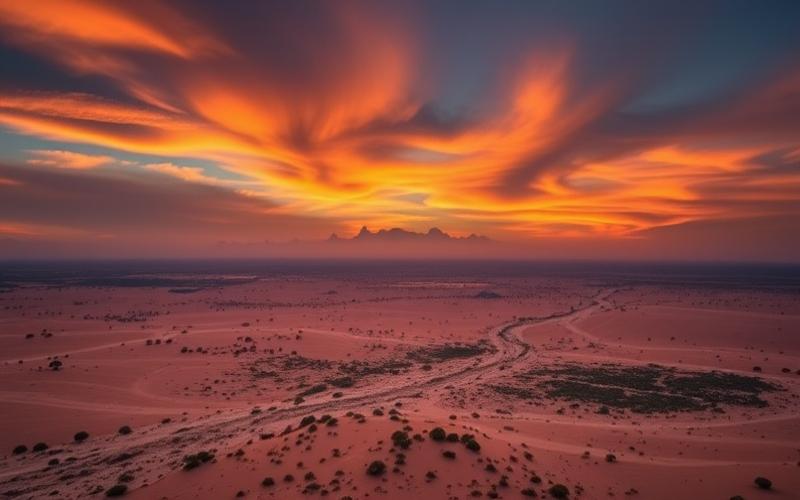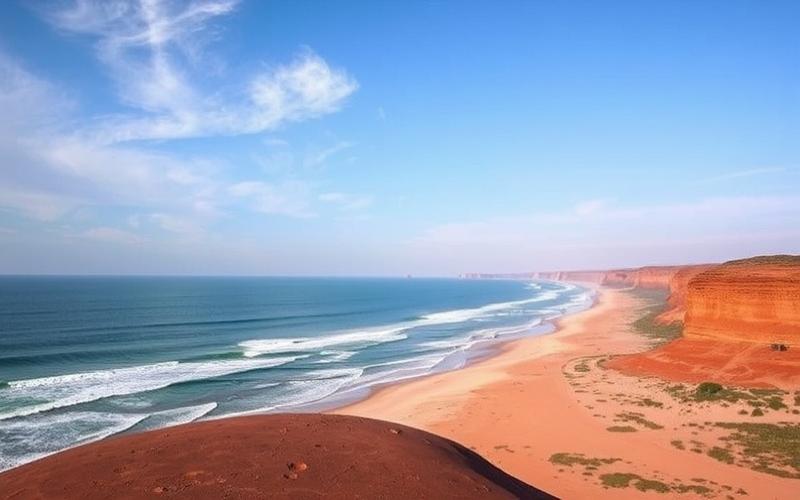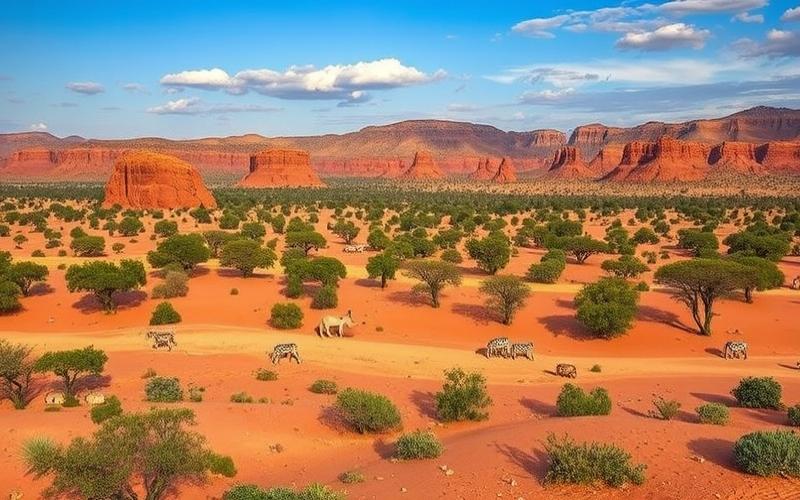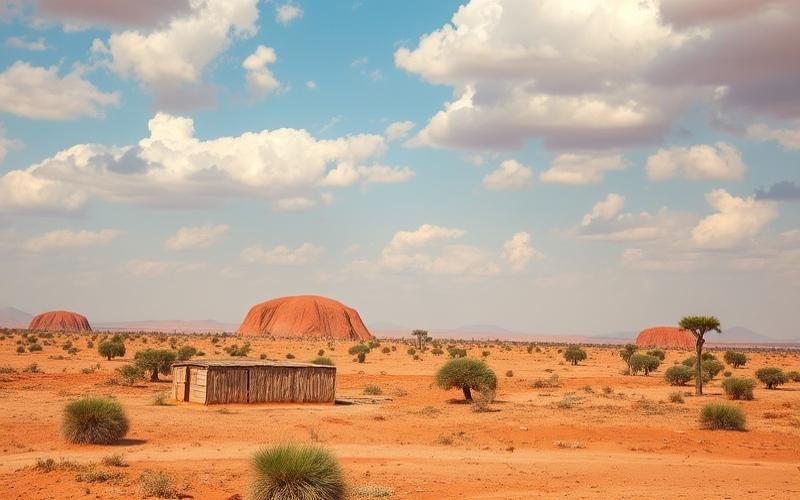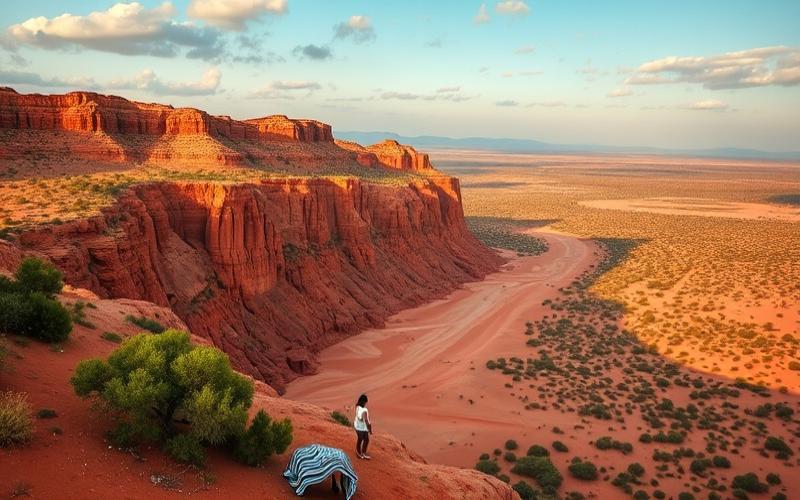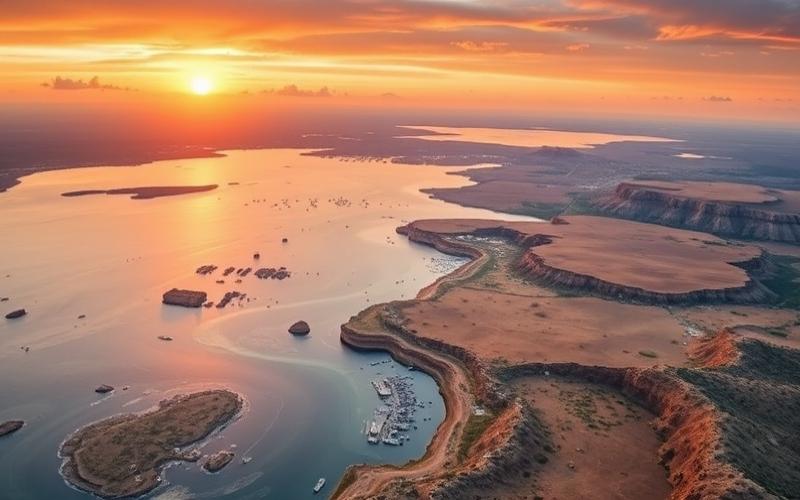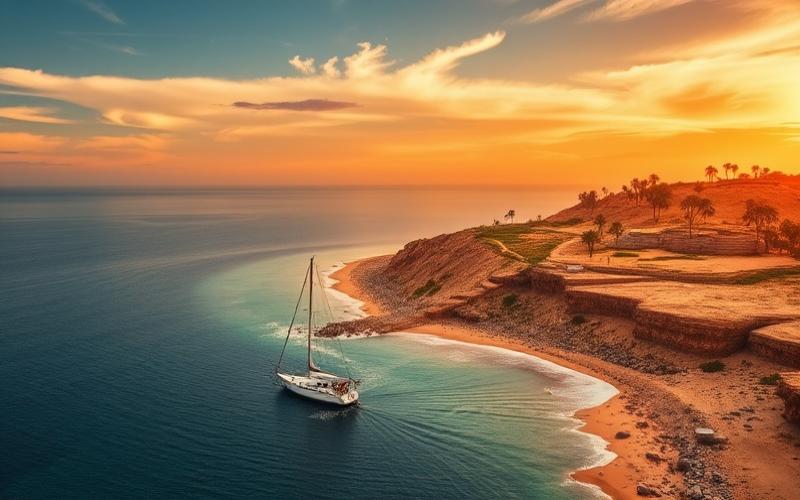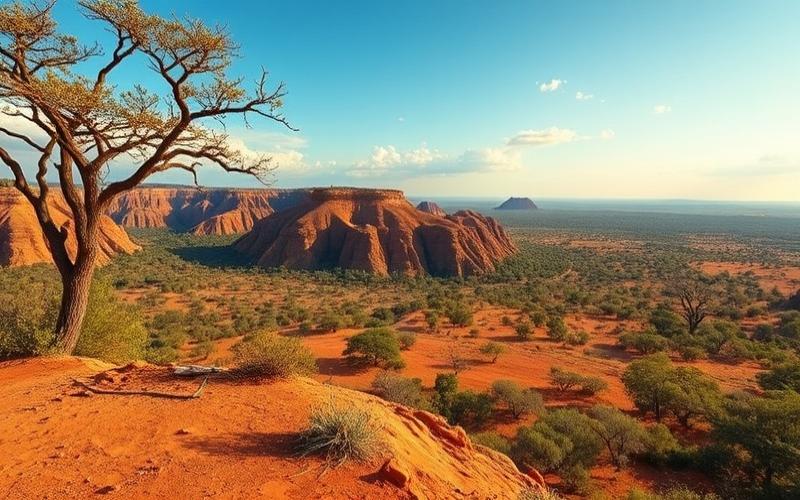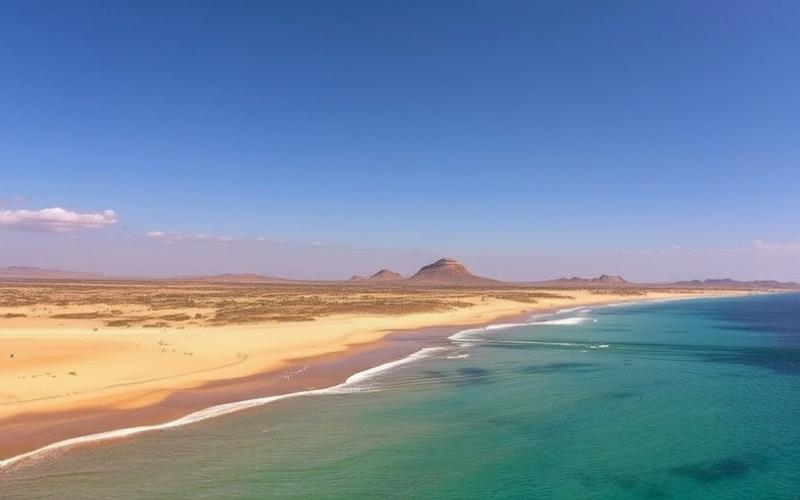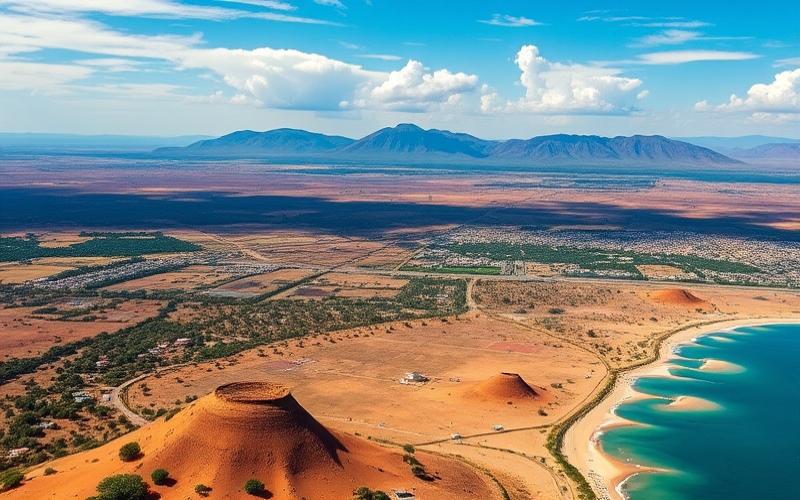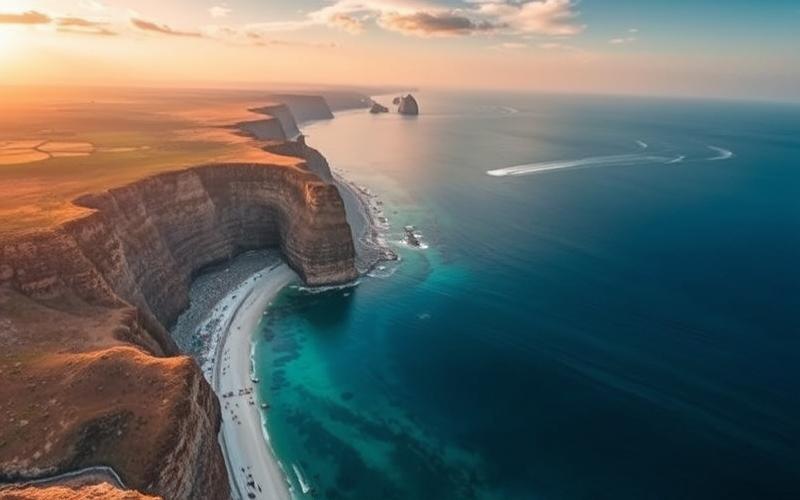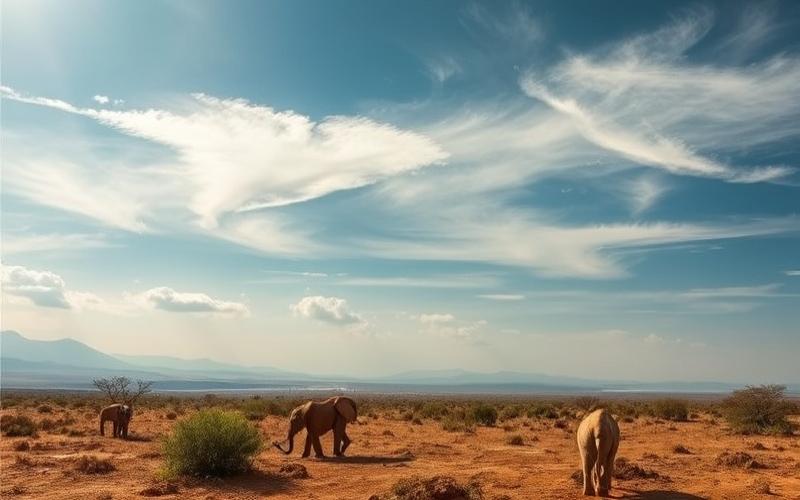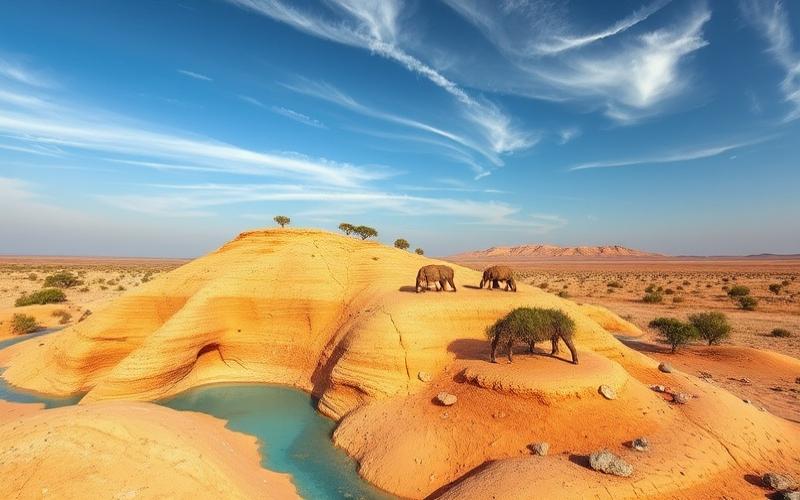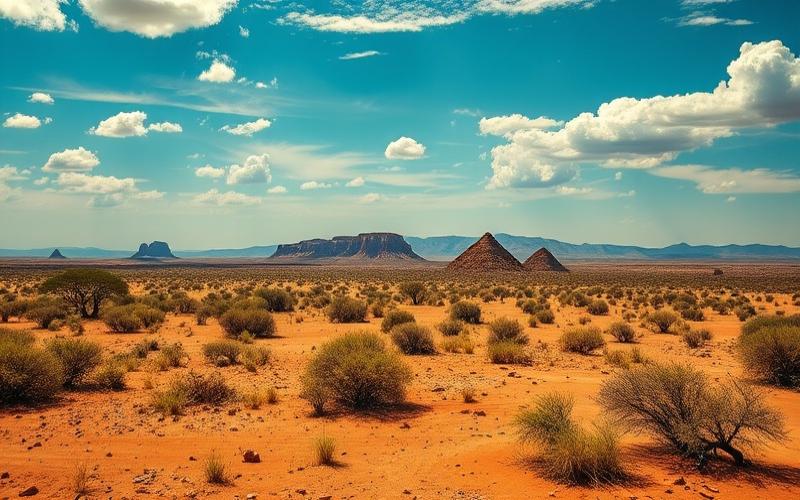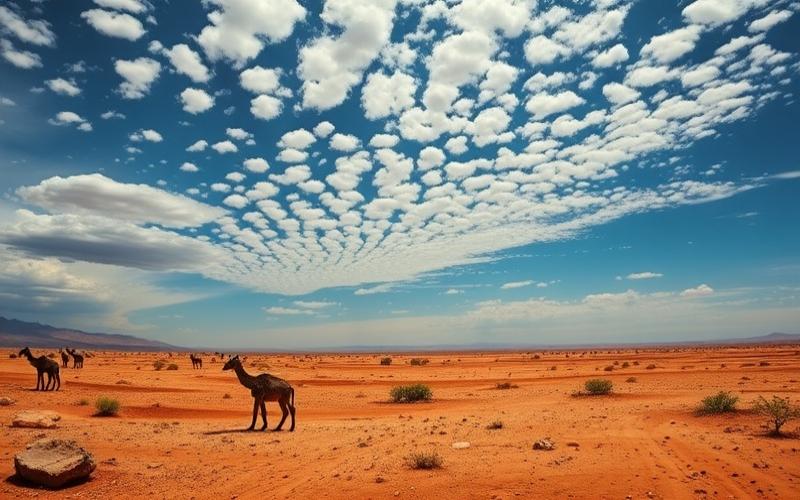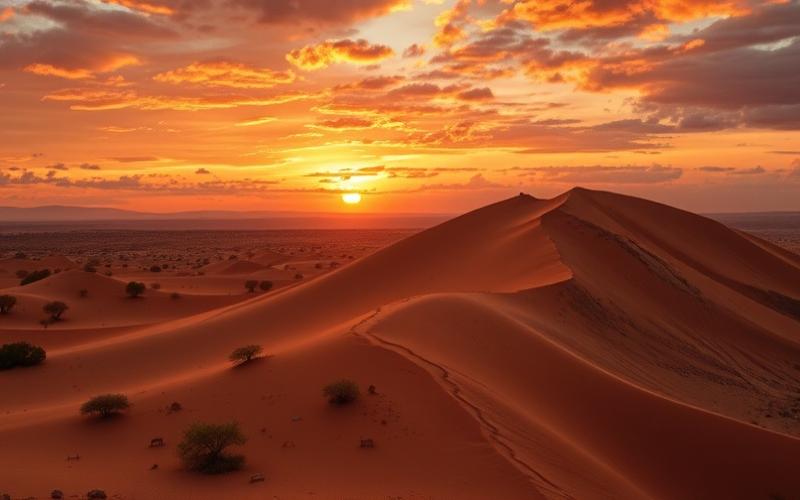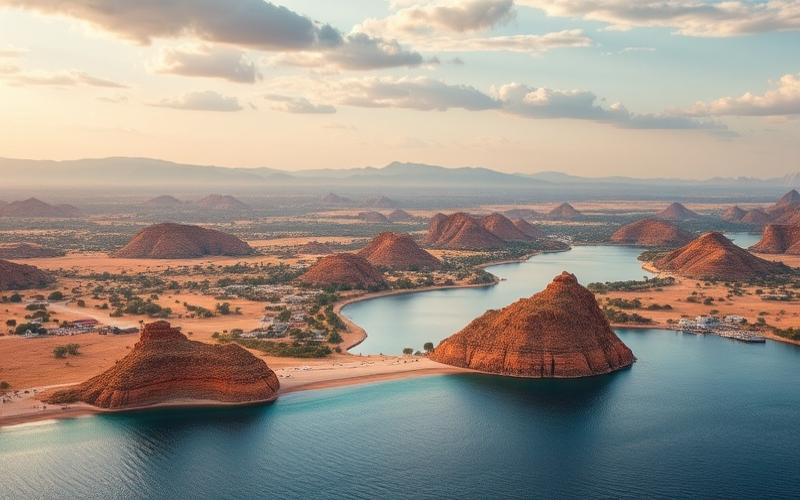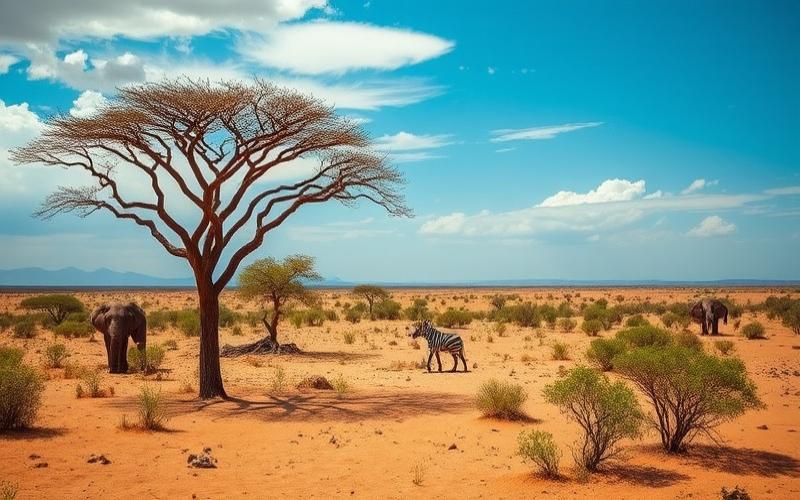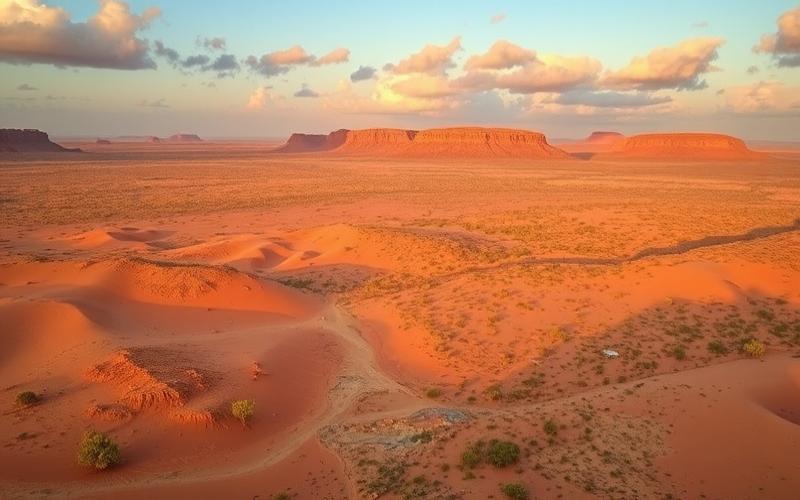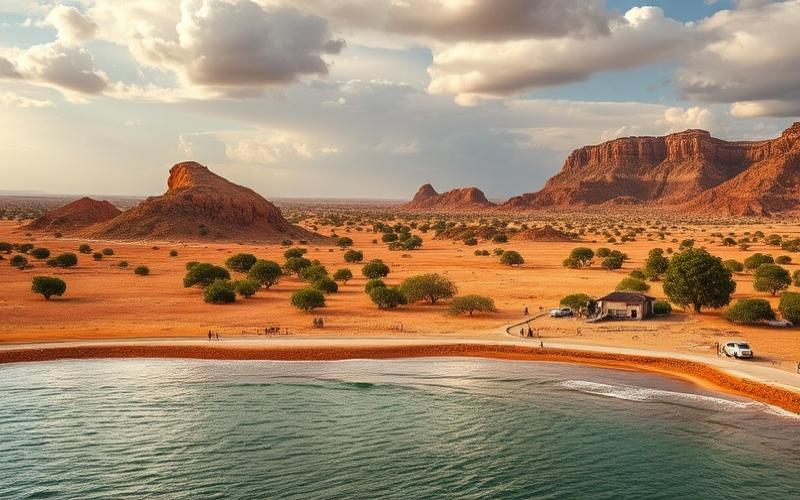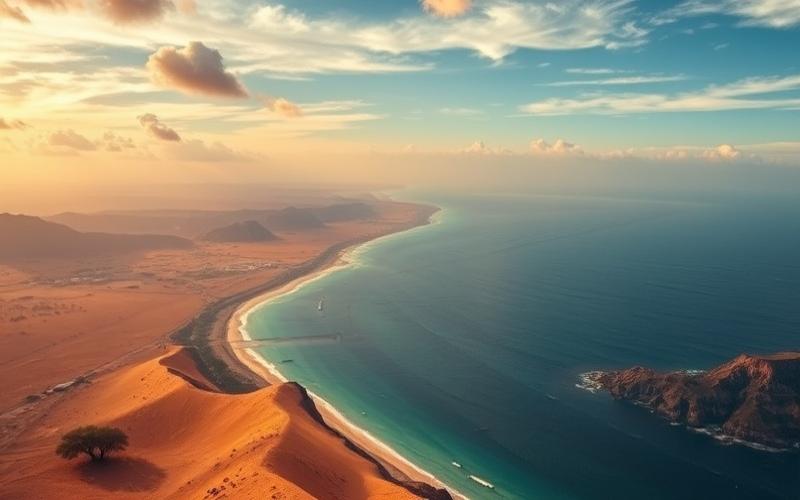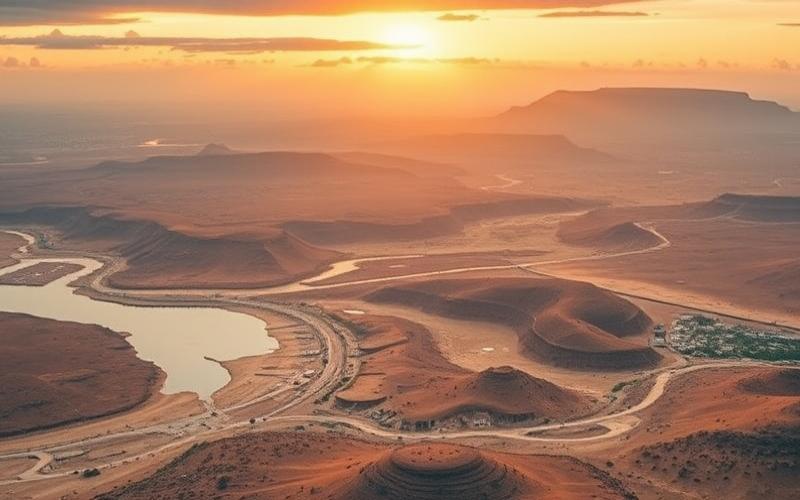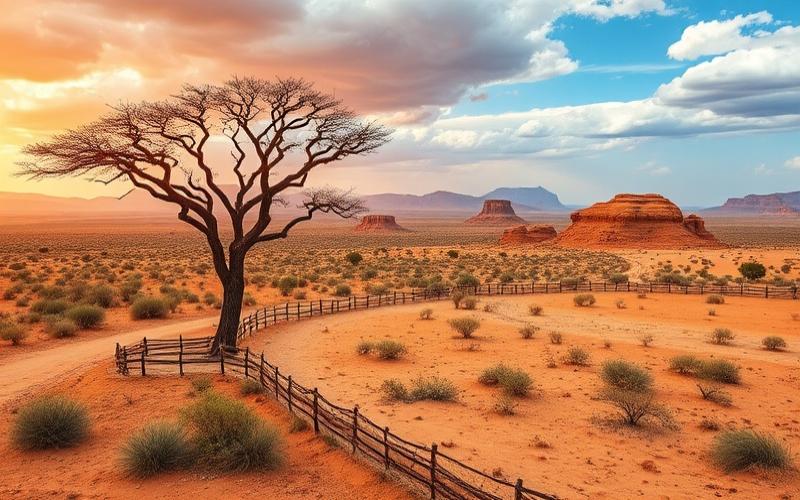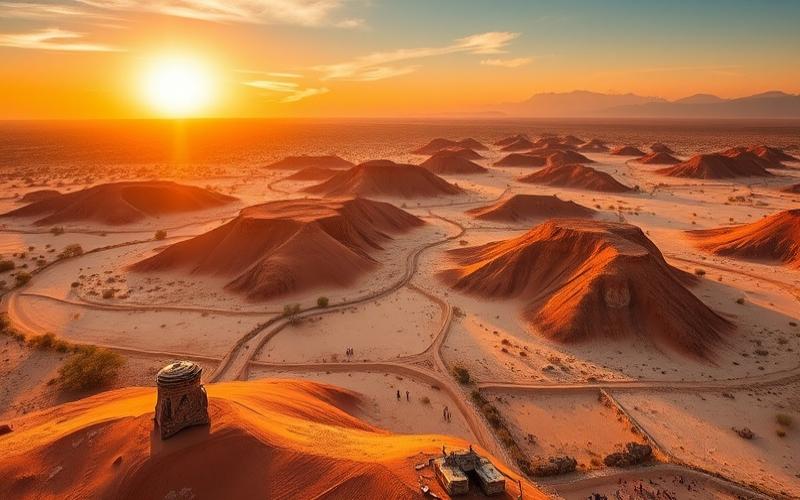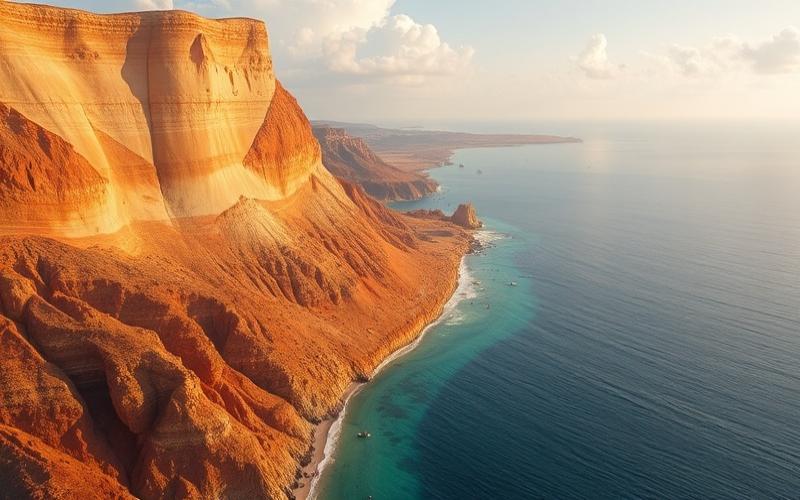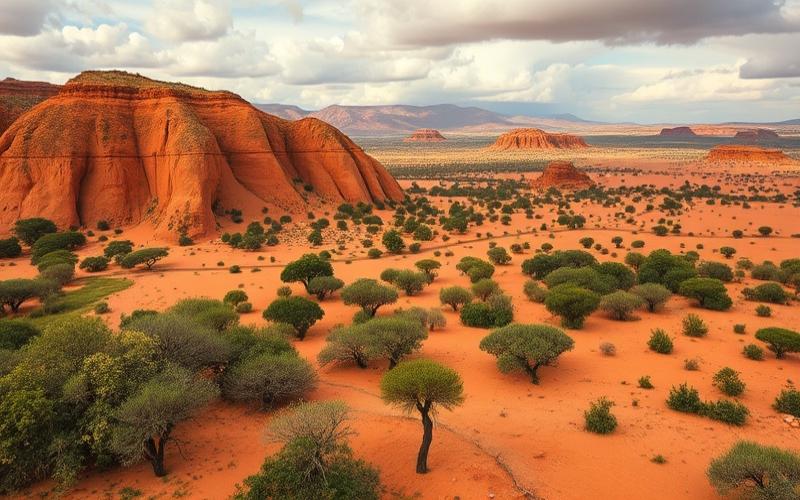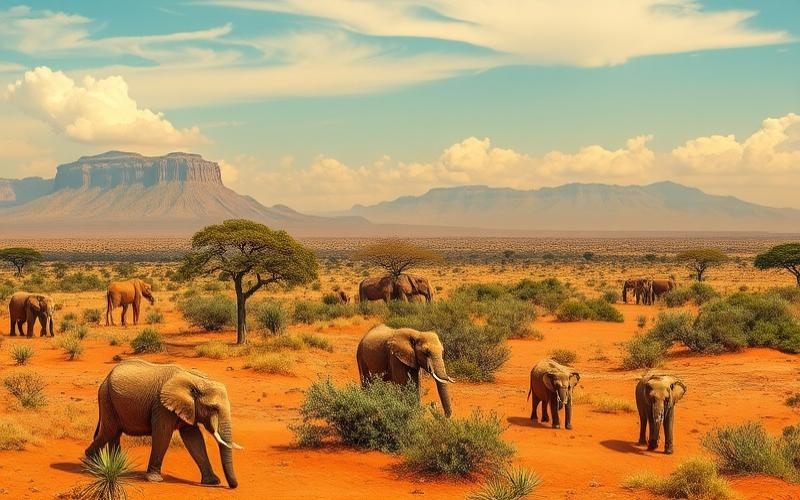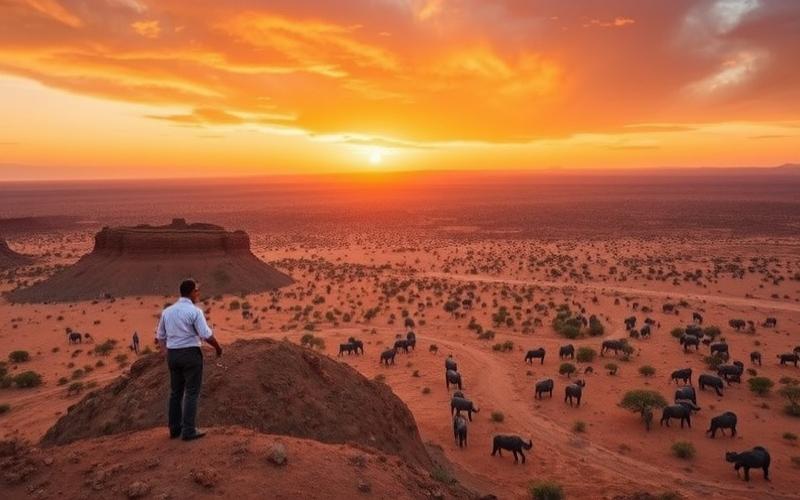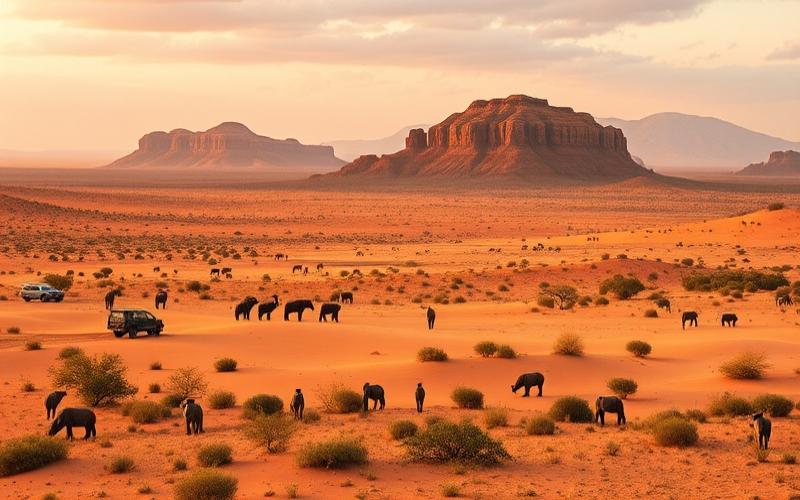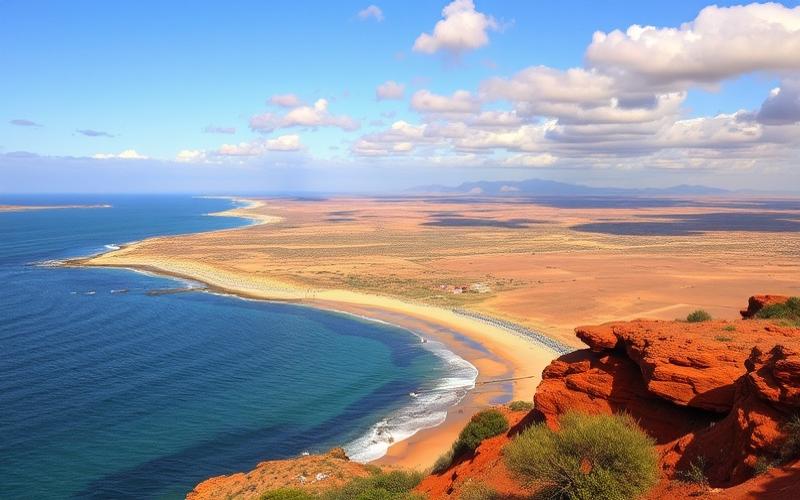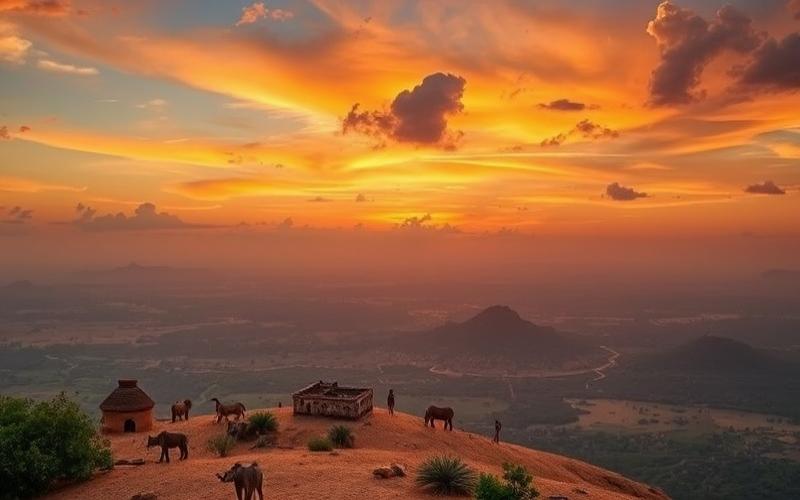
 Published on and written by Cyril Jarnias
Published on and written by Cyril Jarnias
South Africa, a country of striking contrasts and breathtaking landscapes, offers a climate as varied as its many cultures and traditions. For expatriates, adapting to this climatic diversity can be an exciting challenge, but one that requires well-thought-out strategies to make the most of this enriching experience.
Whether you’re drawn to the warm summers of Cape Town, the mild winters of Durban, or the dry climate of Johannesburg, understanding local weather nuances is essential for comfortable living.
This article provides practical and tailored advice to help you settle smoothly in this multifaceted country, allowing you to fully enjoy your new South African adventure.
Adapting to South African Climate Variations
South Africa features a wide diversity of climate zones related to its geography, altitude, and the influence of the Atlantic and Indian Oceans.
| Region | Main Climate | Average Temperatures | Characteristics |
|---|---|---|---|
| Coastal Regions | Mediterranean (southwest), Humid Subtropical (east) | 54–82°F (Cape Town), 70–82°F (Durban) | Frequent winds, variable rainfall depending on coastlines, warmer sea on the east |
| Central Plateau | Continental/Steppe | Cooler, possible frost in winter | High altitude, marked day/night temperature variations |
| Desert Areas | Arid (northwest, Namib, Karoo) | Very hot during the day, cold at night | Very low rainfall, high evaporation |
Seasons are reversed compared to Europe, with winter from June to August and summer from December to February.
Understanding Seasonal Variations and Microclimates is Essential for Expatriates
- The southwest coasts (Cape Town) experience wet winters and dry summers, with powerful winds (“Cape Doctor”).
- The eastern coast (Durban, KwaZulu-Natal) remains warm and humid, suitable for swimming year-round.
- The central plateau (Johannesburg) is cooler, with summer thunderstorms and dry, cold winters.
- Desert areas (Karoo, Kalahari) are subject to large temperature swings and extreme aridity.
Practical Tips for Adapting to the South African Climate
Clothing Choices:
- Prefer light, breathable, and covering clothing for sun protection.
- Add a warm jacket for cool evenings on the plateaus or in the deserts.
- Bring a raincoat for Cape winters or eastern summer showers.
Sun Protection and Hydration:
- Apply high-SPF sunscreen.
- Wear a wide-brimmed hat and sunglasses.
- Drink water regularly, especially in arid regions or during heatwaves.
Managing Temperature Fluctuations:
- Adopt a layering system to adapt to rapid changes (especially in the Highveld or deserts).
- Monitor weather reports to anticipate storms, thunderstorms, or heatwaves.
Facing Extreme Conditions:
- Seek shelter during storms (notably in the Cape).
- Avoid outdoor activities during heat peaks or weather alerts.
- Plan water reserves and dust protection in desert areas.
Role of Local Infrastructure:
- Air conditioning is common in offices, hotels, and modern housing, essential during hot and humid periods.
- Heating systems (electric or gas) are necessary on the central plateau and in the south during winter, where nights can be very cold.
- Older or budget housing may be less insulated: plan for extra blankets and appropriate nightwear.
Key Takeaways
Adapting to the South African climate relies on knowledge of local microclimates, clothing preparation, vigilance against sun and dehydration, and the judicious use of infrastructure like air conditioning or heating depending on the season and region.
Good to Know:
South Africa’s coastal regions require light clothing and sun protection, while in desert areas, hydration is essential; the central plateau often demands warmer clothing in the evening. Expatriates should leverage local infrastructure, such as air conditioning, to manage heatwaves and use heating systems for the cool nighttime temperatures of the plateau.
Climate Impacts on Expatriate Health and Well-being
Expatriates in South Africa face various climate challenges impacting their physical and mental health.
The South African climate is characterized by great variability: often hot and dry summers, particularly inland, and mild winters with rains in some coastal regions.
Summary Table of Main Climate Challenges
| Climate Challenge | Potential Health Effects | Specific Impacts for Expatriates |
|---|---|---|
| Hot and Dry Summer | Risk of dehydration, heatstroke, increased fatigue | Difficulty acclimatizing, reduced physical performance |
| Mild Winter with Rains | Humidity potentially worsening respiratory or rheumatic diseases | Increased sensitivity for those from cold climates |
| Intense Sun Exposure | Sunburn, increased risk of skin cancers | Lighter skin more vulnerable |
| Rapid Variations | Thermal stress (sudden hot/cold shifts) | Difficult physiological adaptation |
Potential Health Effects
Physical Health
- Dehydration, heatstroke during prolonged sun exposure
- Worsening of respiratory allergies during humid seasons
- Increased risk of waterborne infections during floods or after heavy rains
- Chronic fatigue related to persistent heat
Mental Health
- Difficulty sleeping during heatwaves
- Decreased energy related to unusual seasonal variations
- Psychological stress linked to rapid adaptation to the new climate
Specific Risks
- Intense Sun Exposure
- High risk for unaccustomed individuals: rapid sunburns even in winter; notable increase in melanoma risk.
- Extreme Temperatures
- The body may take several weeks to acclimatize; critical period during which thermal stress increases.
- Humidity
- Can cause skin discomfort (irritations), promote certain fungal or respiratory infections.
Practical Tips to Mitigate These Impacts
- Protect your skin: high-SPF sunscreen, light covering clothing, wide hat.
- Adjust your schedule: prefer outdoor activities early morning or late afternoon to avoid peak heat.
- Maintain good hydration: drink regularly without waiting for thirst. Always carry a bottle when traveling.
- Monitor your diet: prefer water-rich fruits/vegetables; avoid excess caffeine/alcohol which increase dehydration.
- Ventilate your home regularly to limit indoor humidity.
Psychological Impacts Related to Climate Adaptation
Arriving in an environment with stronger sunlight and different seasonal rhythms can cause persistent fatigue (“climate jetlag”), sleep disorders, or temporary mood drops.
Recommended Strategies
- Take time to observe your own physical/psychological reactions to weather changes;
- Maintain a stable routine (sleep/meals/activities);
- Practice relaxation/meditation to manage anxiety related to change;
| Key Takeaway: South African climate challenges require anticipation and continuous adaptation. Enhanced vigilance regarding sun protection, hydration, and active listening to bodily signals generally allows for a smooth acclimatization. |
Good to Know:
In South Africa, intense sunlight can increase the risk of sunburn and dehydration; it is advisable to regularly use sunscreen and drink plenty of water, while adapting your outdoor activities to cooler hours. Climate variations can also affect mood and energy, so maintaining a stable routine and practicing relaxing activities, like yoga or meditation, can help manage stress related to these changes.
Strategies for Living with Extreme Climates in South Africa
Local residents and expatriates in South Africa adopt various strategies to adapt to temperature variations, especially in hot or dry climate zones.
Adapted Agricultural Practices:
- Use of drip irrigation systems to save water.
- Selection of drought-resistant crops like sorghum, millet, or certain maize varieties.
- Crop rotation and soil mulching to limit evaporation.
- Adoption of agroforestry techniques (trees planted around fields) to provide shade and reduce moisture loss.
Housing Equipment and Design:
- Construction with insulating materials such as hollow bricks, reflective roofing, or terracotta tiles that limit indoor heat.
- Installation of fans, efficient air conditioners, or reversible heat pumps in modern homes.
- Windows equipped with external shutters, heat-blocking films, or thick blinds to reduce direct solar impact.
- Simple systems like green roofs or integration of shaded spaces (covered terraces).
Essential Clothing and Accessories:
Typical list used by locals and expatriates:
- Wide-brimmed hats
- UV sunglasses
- Light clothing in cotton or linen covering arms and legs
- High-SPF sunscreen (SPF 50+)
Local Water Conservation Techniques:
Main practices used in arid regions:
- Rainwater harvesting via domestic tanks
- Reuse of greywater (from washing) for irrigation
- Strict limitation of garden watering during dry season
- Community awareness on reducing waste
| Equipment | Main Function | Suited for Hot/Dry Climates |
|---|---|---|
| Water Tanks | Rainwater storage | Yes |
| Reflective Roofs | Reduction of indoor heat | Yes |
| Reversible Heat Pumps | Economical heating/cooling | Yes |
Testimonials from Well-Adapted Expatriates:
“Upon arriving in the Karoo, I installed a water collector under each gutter. I also learned to cultivate my garden only with indigenous plants that survive without daily watering.”
— Jean-Pierre B., French expatriate
“The first months were difficult. But thanks to advice received from a local association, I changed my clothing habits; I now always wear a wide hat whenever I go out.”
— Sophie M., Swiss expatriate
Key Role of Local Infrastructure:
Energy Supply:
Eskom remains the main provider but its network can be unstable during heat peaks. Many then opt for individual solar installations.
Access to Drinking Water:
In some rural provinces subject to prolonged drought, there is a regulated public system where each household receives a minimum free daily allocation. Municipal stations also ensure advanced treatment against any contamination related to water stress.
Local Organizations Offering Support/Information to Newcomers:
Recommended list:
- SANBI (South African National Biodiversity Institute) – advice on local ecological adaptation
- Water Wise South Africa – educational resources on water conservation
- Expat Community Forums SA – specialized forums offering experience feedback
Community workshops are regularly organized by these bodies to raise awareness among permanent residents and newcomers about specific South African climate issues and appropriate solutions according to their region.
Good to Know:
South Africans often build houses with thermal insulation and use rainwater tanks to manage drought, while expatriates adopt light clothing in natural fibers and equip themselves with hats for the intense sun. For local support, organizations like AgriSA offer practical advice on sustainable agriculture, and access to essential services, such as solar energy and drinking water, is facilitated in urban areas.
Home Equipment and Layout for Optimal Local Climate
Types of Climate Equipment Adapted to Different South African Regions
- Western Cape Region (Mediterranean Climate):
- Reversible Air Conditioning to manage hot summers and mild winters.
- Natural Ventilation via sea breezes, supported by ceiling fans.
- Spot heating like electric radiators or stoves for cool nights.
- Eastern Coast (KwaZulu-Natal, Humid Subtropical Climate):
- Dehumidifier and Reversible Air Conditioner, necessary due to high humidity.
- Ceiling fans to enhance air circulation and limit energy consumption.
- Semi-Arid Regions (Karoo, Kruger):
- Efficient air conditioning systems against extreme heat.
- Heat pumps adapted to significant day/night variations.
Choice of Construction Materials and Insulation
- Reinforced insulation of walls, roofs, and floors with mineral wool or rigid panels to limit thermal losses in both winter and summer.
- Use of local materials with high thermal mass (stone, thick brick), effective in regions with large day/night temperature variations.
- Double-glazed exterior joinery recommended to maximize energy efficiency.
Interior Layout Advice
- Install ceiling fans, very effective everywhere except in naturally ventilated coastal areas.
- Use thermal curtains that limit both cold and heat entry depending on the season.
- Prefer a southwest/southeast orientation for main rooms to optimize:
- Natural light intake during the austral winter
- Sun protection during hot months
Integration of Renewable Energies
| Technology | Regional Advantages |
|---|---|
| Solar PV Panels | Year-round electricity production; particularly cost-effective in Western Cape due to strong sunlight |
| Solar Water Heater | Economical hot water; suitable for low-rainfall regions |
| Air/Water Heat Pump | Effective solution in all climate types with good insulation |
Recommendations for Choosing Indoor Plants Adapted to the Local Climate
Recommended list:
- Robust tropical plants: Spathiphyllum, Philodendron, well-suited to humid areas like Durban
- Drought-resistant plants: Sansevieria, Aloe Vera, ideal for Karoo or Kruger
- Universal air-purifying plants:
- Ficus elastica
- Chlorophytum comosum (spider plant)
- Dracaena marginata
These plants promote better indoor air quality while naturally contributing to slight thermal regulation through controlled transpiration.
Good to Know:
Prefer reversible air conditioning systems and materials like brick or stone for optimal insulation in South Africa, and opt for ceiling fans and thermal curtains to regulate indoor temperature; integrate solar panels and choose plants like ficus that tolerate heat well and purify the air.
Disclaimer: The information provided on this website is for informational purposes only and does not constitute financial, legal, or professional advice. We encourage you to consult qualified experts before making any investment, real estate, or expatriation decisions. Although we strive to maintain up-to-date and accurate information, we do not guarantee the completeness, accuracy, or timeliness of the proposed content. As investment and expatriation involve risks, we disclaim any liability for potential losses or damages arising from the use of this site. Your use of this site confirms your acceptance of these terms and your understanding of the associated risks.


